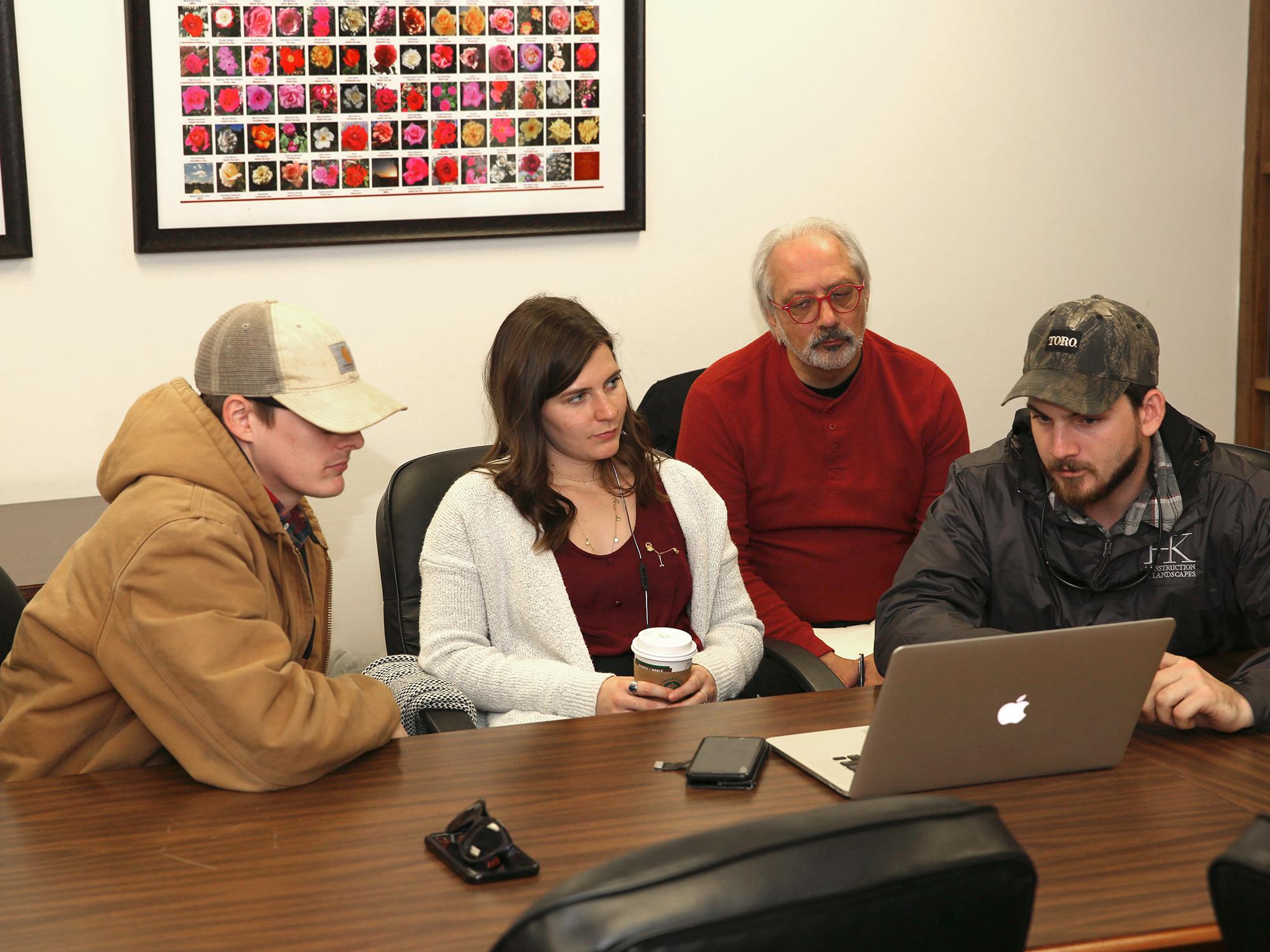Information Possibly Outdated
The information presented on this page was originally released on March 8, 2019. It may not be outdated, but please search our site for more current information. If you plan to quote or reference this information in a publication, please check with the Extension specialist or author before proceeding.
Landscape architecture students developing Africatown design
STARKVILLE, Miss. -- Landscape architecture students at Mississippi State University are involved in a win-win situation with the underserved community of Africatown in Mobile, Alabama.
In late February, students in Bob Brzuszek’s undergraduate planting design class heard Anderson Flen, an Africatown native now active in revitalization efforts, describe the rich environment he grew up in years ago.
Africatown was founded by descendants of slaves brought into the U.S. in 1860 on the slave ship Clotilda from what is now Benin, Africa. Although slavery was legal at the time, importing slaves was illegal. The Clotilda was the last ship known to have imported slaves into the U.S. Some of the descendants of those slaves still live in Africatown today.
Brzuszek, an MSU Extension Service professor of landscape architecture, gave his students just over one week to develop two plans for how to embrace this past in a beautiful and functioning landscape for the Hope Community Center. Flen asked students to develop a commemorative design that recognizes the legacy of past educators on the site of the former school.
“Both of the student plans responded to Anderson’s comment that plants were the fabric of the community, their childhood,” Brzuszek said. “The plans they developed used plants to symbolize what the teachers meant to the community and to contribute to community memories.”
The community center stands where an elementary school stood in this once teeming community that now numbers less than 3,000 residents. Flen is the visionary who hopes to use nature around the community center to reenact and illustrate things of value related to the community and education.
“The campus served as an educational oasis that blended the environment and strength and vision of the teachers to instill in myself and many of my colleagues lessons we never forgot,” Flen said. “Those grounds should be holy grounds for the educational prosperity that we gained from our time in that school, and those teachers and educational staff somehow need to be remembered.”
That was the task assigned to eight students in Brzuszek’s planting design class. Two teams formed to rapidly develop two ideas to capture this goal. On March 6, the teams made long-distance presentations of their proposals to members of the Africatown community.
Both student plans focused around a winding sidewalk that forms the back property line of the Hope Community Center.
One plan focused on the senses and memories, reintroducing the flavors, scents and colors of former days by planting fruit trees, savanna grasses, fruiting vines and perennials.
“We worked with plants that followed along the lines that Anderson talked to us about when he described the way it was growing up there,” said Sara Peppers, an MSU landscape architecture student.
MSU landscape architecture student Clint Kiser said the group chose plants that would not require much maintenance after the first year.
“A long lifespan is important, and we wanted to add color and fruit to the landscape,” Kiser said.
The other plan used plants to depict five stages in the life of the Africatown community, including its heritage, the journey to Mobile, childhood memories, a disconnect from the past and finally a restoration. This plan also calls for carefully chosen trees to be planted to commemorate specific teachers from the community’s past.
“The concept is to give you a sign that, even though your community has been through some hard times, you can come out of this, too,” said Nate Lambeth, an MSU landscape architecture student.
Greg Cypian, a member of the Africatown community today, was part of the group that heard the students’ presentations. He and others will provide feedback on the plans, allowing the students to modify their drawings and develop final renderings of the projects. These students will be part of a team that plans to do some of the actual installation later this spring.
“I think this will be a good addition to the community area,” Cypian said. “I love what you guys have done and the symbolism you’ve brought in.”
Sadik Artunc, head of the MSU Department of Landscape Architecture, said MSU became involved in this project because there is no undergraduate landscape architecture program in Alabama. MSU waives in-state tuition to Alabama students who want to major in landscape architecture.
“Landscape architecture provides a vital link in the design of our communities, and Mississippi State students are taught to develop plans that celebrate community pride and a sense of place,” Artunc said. “We welcome a diversity of students so that we can create richer places.”



